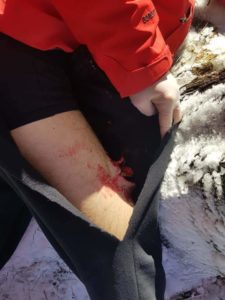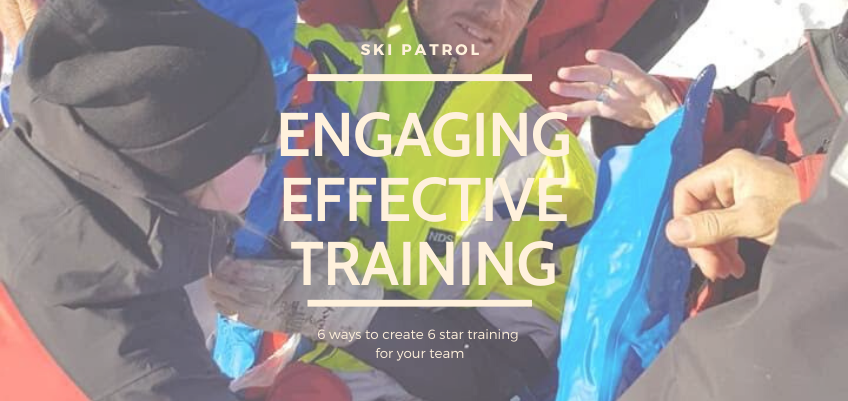Welcome to Medic52’s Ski Safety Blog, where we share insights, tools and training tips to help patrols maximize training efforts and ensure that things run smoothly, especially when it counts the most. Today, we’re sharing 6 ways to create efficient and engaging training for your patrol.
As you ski patrollers know, it takes more than expertise to create a great training experience. While your content is already top-notch, make sure you aren’t overlooking these valuable opportunities to enhance your current training practices.
So, let’s get into 6 Ways to Create Efficient and Engaging Training for your Patrol
1. Hands-On Training Scenarios
Every Patroller has read and been tested on the OEC text, but getting hands-on experience is critical in mastering a skill, especially first aid. Scenarios help Patrollers deal with the task at hand but also put it into context with other events that may be happening around you. Bystanders, weather and location all play a part in changing the way you apply a splint for example. Providing some variety in training through scenarios helps make the core skill a little more natural, whilst developing situational awareness and ability to adapt to the scenario at hand.
2. Invest in external experience
While your own patrol is probably full of experts, great instructors and knowledgeable professionals, sometimes an outside voice speaks volumes. Involving local EMS and Search & Rescue teams in training sessions can help integrate the patrol with the Incident Response protocol for your jurisdiction. It also integrates local EMS procedures into your patrol, helping to improve communication and continuity when transferring patient to EMS care.
Bringing in experts from outside rescue organizations to present on topics provides insight into the care a patient receives beyond the patrol room. A presentation from an Orthopedic Surgeon on how to properly package and care for a patient with a suspected ACL or MCL injury, may improve the long-term recovery for that patient. A Cardiologist providing direction on the proper response to cardiac related illnesses may change the on-hill care provided by Patrol to improve a patient’s chance for survival and recovery.
Some of the best training I’ve had is learning from people in similar roles but external to ski patrol. Attending events like FIPS Congress, or bringing in paramedics, doctors or from a different rescue organisation to present on a topic provides a different and fresh perspective. Inspiration to make changes or introduce new practices can most often be found from these sessions.
3. Have a post training action plan
Training is an ongoing part of proficiency, so once your preseason training is done, those 100 hours need to be built upon. Regular small update tasks, across a broad range of topics should be presented and discussed. Even a simple 5-minute demo and discussion on a piece of equipment that isn’t used a lot at your morning briefing will promote discussion during the day amongst the team.
4. Present topics for the 8 types of intelligence
People learn in different ways, some need to simply read about a topic and it’s set, others need to hear it, imagine or feel it first hand to have the best chance of it staying with them.
This is why it’s so important to cover a topic three or four times with different delivery styles. For example Pre coursework helps the readers and thinkers who need time to let it roll around in their heads, group discussion helps interpersonal by gathering others thoughts and experiences, whiteboard or paper based discussion allows the existentials to answer ‘why’ and scenarios take care of the kinesthetic feeling groups.
5. Moulage

The best experiences for training are as realistic as possible in a safe environment. Moulage is the art of applying mock injuries for the purpose of training emergency response teams and other medical and military personnel. Fake blood and makeup can be very confronting even when you know it’s not real.
That’s the point – to get the heart rate up and provoke a reaction from the responder. It simulates a real response and allows all involved to find the good aspects of care, and work on what didn’t go so well in the next.
A bit of screaming from the patient helps too!
6. Logging and tracking
Developing a comprehensive training plan also needs tracking across the team so you know where everyone needs work. Consistency and quality is enforced by your training and assessment team. Medic52 has a training passport module to help you do just that – track all your competencies, help assessors ensure a level playing field and remind you when each team member needs a refresher.
What are your tricks for making training interesting? We’d love to hear from you!

0 Comments
Leave A Comment